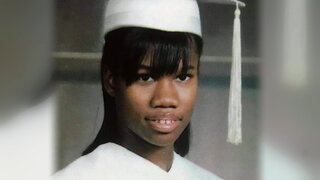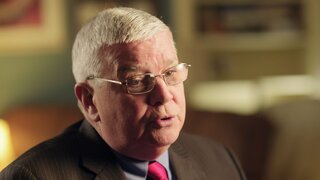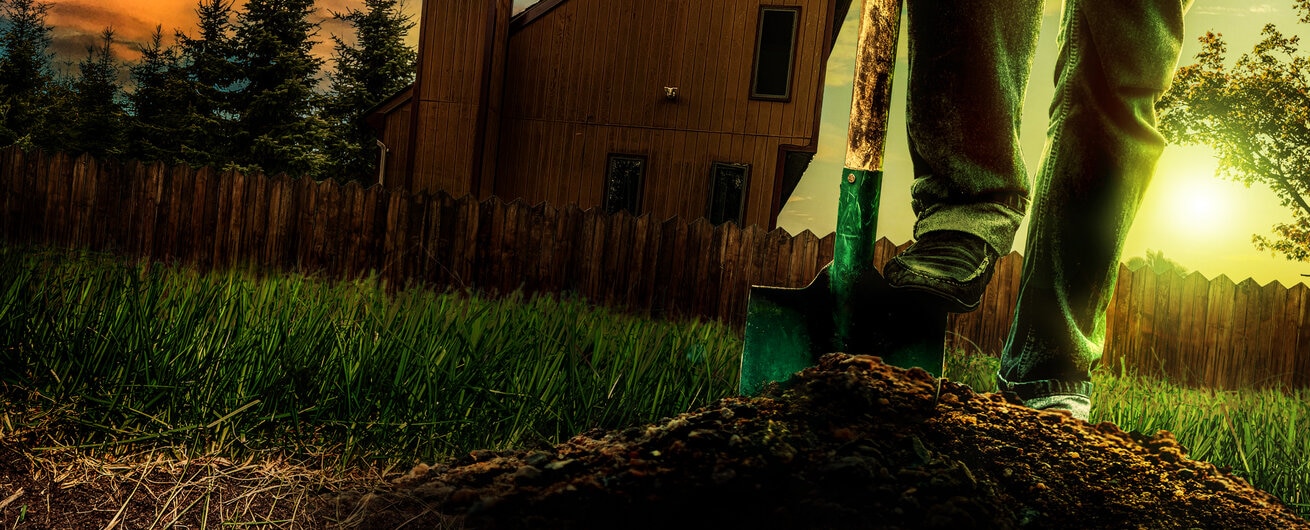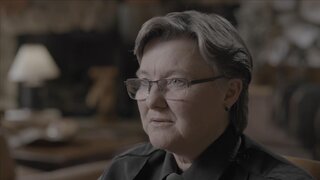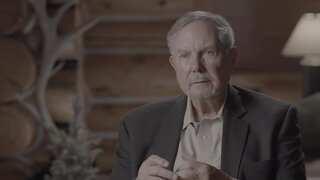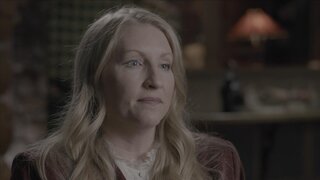Create a free profile to get unlimited access to exclusive videos, breaking news, sweepstakes, and more!
‘This Was Someone Who Died A Violent Death’: Former Marine Beaten To Death With Shovel By 16-Year-Old
In January 2014, the disappearance of Corey Samuels in the small town of Coaldale, Pennsylvania would prove one thing: Sometimes, you can't trust your friends.
One cold winter night in January 2014, former marine Corey Samuels went out into the woods of Coaldale, Pennsylvania and never returned.
When Kristin Sawicki got a knock on her door the following morning and opened to find her brother Samuels' live-in girlfriend, Tara Kurtz, she didn’t know what to expect. Kurtz told her Samuels hadn’t come home the previous night after hanging out with his friends, Stanley Kralik and Oliver Trizzari.
She had been trying to contact him all day, but she was not getting any response. She said she had also called Kralik and Trizzari, who claimed they didn't know where Samuels was. When Sawicki tried to reach her brother, her call went straight to voicemail, sparking concern.
"It was unlike him to not answer the phone," Sawicki told “Buried in the Backyard,” airing Thursdays at 8/7c on Oxygen.
After another day passed, and neither Kurtz nor Sawicki heard from Samuels, Sawicki reached out to their mother, Linda Fenstermaker, in Florida, who was also unable to reach her son. Although she tried to tell herself that perhaps Samuels was just taking some time away and didn't want to be found, she was unable to believe it.
"That is the easiest scenario to accept, but you get that pit in your stomach that something wasn't right," Fenstermaker said.
A few days later, Sawicki reached out to the police at the suggestion of her mother. Samuels, a former marine who served in Afghanistan, struggled with PTSD, and the family was afraid that he may have gone into the woods to take his own life.
Following the report, police reached out to Kurtz, who told authorities that she and Samuels had been hanging out at Kralik's house with another friend, Trizzari, until they decided they wanted a boys' night out.
Kurtz wasn’t happy about the turn of events, but she went back to her and Samuels' apartment alone. The following morning, she woke up to find that Samuels still had not returned and wasn't answering his phone. When she contacted Kralik, he said that he didn't know where Samuels was, prompting her to reach out to Samuels' sister, Sawicki.
While Kurtz reported that she and Samuels had a happy relationship, Sawicki had previously gotten the impression that things weren't picture-perfect behind closed doors, prompting police to search the couple's apartment for any clues. When that proved to be a dead end, investigators then turned their attention back to Kralik and Trizzari, who they believed were the last people to see Samuels before he vanished.
Trizzari, who lived in the same building as Samuels, had introduced Samuels to Kralik, a 16-year-old high school student, and the three became friends. Police wasted no time bringing in both for questioning, beginning with Trizzari.
He told investigators that the three of them had gone into the woods to drink, but an argument ensued after Samuels made an insulting comment about Kralik's ex-girlfriend. At that point, Samuels walked off alone, while Kralik and Trizzari left the woods together, according to Trizzari.
When Kralik came in for an interview, he recounted the same story.
After the interviews, authorities searched the area where Kralik and Trizzari said they had last seen Samuels, along with the surrounding woods. That search, however — which utilized helicopters and rescue dogs — turned up empty.
With no other leads, authorities submitted a request to access Samuels’ phone records, and a few months later, they received them. The last recorded activity from Samuels' cell phone took place shortly after midnight on Jan. 21, 2014 — a 911 call that did not actually connect to the dispatch center.
With this information in hand — and the possibility that Samuels had been in danger before he vanished — investigators called Trizzari, Kralik, and Kurtz in for questioning again, and all three stuck to their original stories.
Without a body, investigators were forced to stand by for weeks, until another break in the case came when a local resident, out foraging mushrooms in the woods, came across skeletal remains and clothing. Investigators showed photos of the clothing — including distinctive boots and gloves — to Samuels' family, who were able to confirm the worst: The body belonged to Samuels.
"I was devastated," Fenstermaker told producers. "I just cried. I just hugged my husband, and I told him, 'I couldn't keep him safe. I couldn't do that. I just don't know what to do.'"
DNA testing confirmed that the body was in fact Samuels', and a forensic anthropologist who examined him found that Samuels had sustained trauma to his head and ribs. The manner of death was clear: homicide.
"This was somebody who did not die of natural causes," Schuylkill County District Attorney Jennifer Foose told producers. "This was someone who died a violent death, having his head bashed in. We knew someone wasn't telling us the truth."
Investigators decided to call in Kralik and Trizzariback for questioning, only to find that Trizzari had moved out of the area. While officers searched for Trizzari, they had Kralik's father bring Kralik back to the station for another interview, and this time, when he spoke to police, he told a different story.
He claimed that there had been a high school party taking place in the woods that night, and following the argument, Samuels had headed off toward the party while he and Trizzari went back home. A polygraph test, however, showed that Kralik was lying. Still, during a second interview, Kralik remained unflappable.
"We knew Stanley was involved, but at that point, we couldn't prove it yet," Foose said.
Without any evidence, authorities were forced to release Kralik and focus their attention on locating Trizzari. They found him living around 30 miles away, in a different town, and brought him to a local police station for questioning, where he surprised them by announcing, "I'm ready to tell the truth."
Trizzari claimed that Kralik believed Samuels had sex with his ex-girlfriend, and that Kralik had said, "Corey needs to die." That is when Kralik came up with a plan to murder him, according to Trizzari.
They decided to lure Samuels into the woods under the guise of a guys' night out, and then they would attack him without warning. Once the night came, however, Trizzari had second thoughts, and when he whispered as much to Kralik, Kralik allegedly took the shovel from him and attacked Samuels from behind, striking him in the back of the head. A fight ensued, and during the struggle, Samuels asked why he was being attacked by his friends, recalled Trizzari.
Trizzari confessed to helping kill Samuels, admitting that he used the shovel to hit him in the head several times. They went back and forth, taking turns hitting him, until Samuels stopped moving. Trizzari said that once Samuels was dead, he did not feel any remorse.
The pair then took Samuels' wallet and the rosary bead necklace that he was wearing, dragging his body off of the trail and covering it with snow and branches.
Authorities arrested Trizzari and charged him with murder. They then searched Kralik's home and found exactly what Trizzari had said they would: the shovel used to kill Samuels and his rosary beads, which Kralik kept after killing him.
Police arrested Kralik for murder, but during his interview, he denied any involvement and claimed that Trizzari had acted alone. Kralik said that he failed to report the murder because he was afraid of Trizzari.
When asked why Samuels' necklace was found in his home, however, Kralik was unable to offer an explanation. At that point, Kralik's story started to change. He said he had hit Samuels a couple times in the face with his fist, but that he didn't do anything more.
Prosecutors decided to offer Trizzari a deal, and he pleaded guilty to the lesser charge of third-degree murder in exchange for testifying against Kralik. Two years later, in June 2016, Kralik stood trial. Trizzari recounted the night's events, explaining that at one point before the attack, he looked back and saw Samuels on his phone. Authorities speculated that Samuels may have sensed that he was in danger and had tried to call for help before it was too late, explaining the 911 call in Samuels' phone records.
The trial was a difficult process for Samuels' loved ones.
"Stanley was inches from me, and he would turn around and he had a smug look on his face," Fenstermaker recalled. "He sat there like, 'I'm gonna beat this rap.'"
During the trial, however, the prosecution pulled out an unsuspecting trump card and called a young woman who knew Kralik from school as a witness. She claimed that the day after Samuels' murder, Kralik told her that he had killed a man and then showed her his bloody socks.
After a three-day trial and less than two hours of deliberation, the jury read their verdict: guilty, but on the charge of third-degree murder. The decision was a hard pill to swallow for Samuels' family.
"To me as a parent, that's not enough when you lose a child," Fenstermaker said. "It's not enough. My theory is, if you take a life, you lose yours."
Kralik was sentenced to between 20 and 40 years behind bars, while Trizzari received a sentence of between 15 and 30 years.
For more on this case and others, check out “Buried in the Backyard” on Oxygen on Thursdays at 8/7c or stream any time at Oxygen.com.
